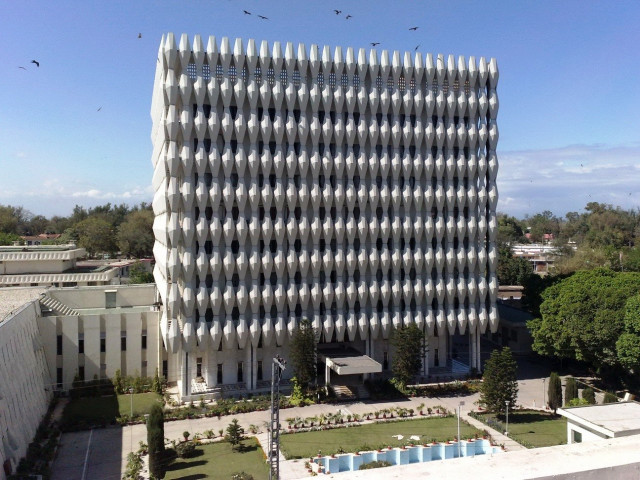SBP's annual report shows 4.1% growth rate
The report shows the economy grew 4.1 per cent as compared to the 1.2 per cent growth in the preceding year.

- Persistent disagreements among tax payers and the provincial governments on expansion of the tax net
- Failure to carry out proposed restructuring of public sector enterprises
- The Energy Sector Debt crisis
The report pointed out that the principal structural problem, however, was the weak fiscal performance; the fiscal deficit bounced back to 6.3 percent of GDP in FY10, i.e., 1.1 percentage points higher than in the previous year. FY10 fiscal performance was characterized by continuing expansion in fiscal and quasi-fiscal operations, that crowded out and otherwise undermined private sector activities, supported the persistence of double-digit inflation, and increased the total public debt and liabilities substantially, from 68.7 percent of GDP in FY09 to 69.5 percent in FY10,” the Report said. Referring to recent unprecedented floods in the country, the Report pointed out that various FY11 macroeconomic targets have suffered a serious setback early into the year as large areas of the country were devastated by widespread rains and unprecedented floods. Large parts of the country’s agricultural heartland were particularly hit hard by these floods, with significant damages to standing kharif crops (cotton, rice and sugarcane) and livestock. The economy also suffered extensive damage to infrastructure (bridges, road networks, gas/power plants, and some industrial units such as rice mills, ginning factories etcetera), productivity losses from supply-disruptions and the large-scale displacement of people, etcetera, it added It said that even a cursory assessment of the broad contours of the losses indicates that their repercussions will continue to stress the economy for many years. It is therefore obvious that the economic priorities and targets for FY11, in particular, will see substantial revision, and all key macroeconomic indicators will likely record deterioration, the report observed. The SBP report said that the impact of the floods has strengthened the inflationary expectations for FY11 - the August 2010 CPI, included a 15.6 per cent year-on-year rise in its food component. However, SBP assessments suggest that the direct impact of the flood-related supply shock is likely to be limited. For example, the impact of flood/rain damages and shortages of minor crops are not expected to persist beyond two to three months as supply line improves and as fresh crops enter the market. Similarly, for some other products, any rise in domestic prices would be capped by low international prices. It is important to note that prices of dairy products were already continuing on a secular rise, even prior to the floods, due to sustained strong domestic and external demand. Livestock losses in the flood would exacerbate this rising trend, but only to a small extent, the report added. The report also acknowledged that the worsening in most of the Pakistan’s macroeconomic variables has further complicated the monetary debate in FY11. “On the one hand, there is the argument that the central bank should respond to the rising inflationary pressures and excessive increase in the fiscal deficit, and on the other, the demand-shock stemming from the flood damages argues for a countervailing monetary easing to help revive the faltering economy,” it added. “In short, the negative shocks stemming from the floods have further exposed the existing structural weaknesses in the economy. Addressing these will require improvements in macroeconomic discipline as well as continued reforms to improve the resilience of the economy,” the report added.



















COMMENTS
Comments are moderated and generally will be posted if they are on-topic and not abusive.
For more information, please see our Comments FAQ